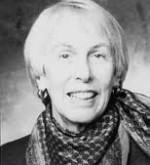The following post was first shared at the Meeting of the Minds panel discussion on the topic of improvisation at the 2014 AOSA Professional Development Conference in Nashville Tennessee.
What I hope you will take away from my remarks today is that – even if Carl Orff had never existed – improvisation ought to be a crucial component of any worthwhile music program for children. Why is this so?
It is so because learning music involves making, making up, and making sense of musical material. In this process, making up – improvising – is embedded in the lesson to contribute to the totality of the learning experience. I suggest that in spite of the claims made for the centrality of improvisation during its first half-century, Orff Schulwerk has too often been a performance–centric enterprise: students learn music by making it under the direction of the teacher. That emphasis needs to be changed.
For when the students teach themselves through improvising, they are given personal agency and ownership of their musical encounters. And it’s important to note that when they are expressing their own musical ideas, they are thinking and behaving in ways that relate not only to learning about music, but also to learning about anything. If you think about endeavors of the imagination such as art, science experiments, writing computer programs, you’ll realize that music offers the same challenges. Students first express their ideas. Next, they analyze those ideas to see whether they work. The ideas then are revised to enhance the outcome. Because much of this work is done in a group setting, students must learn to cooperate with one another. Finally, concentration is a critical component for students to assess their work throughout the experience. All of this is a direct outcome of improvisation. Wouldn’t you like to tell the world that you and your students do all of these things in a medium that touches the heart as well as the mind?
So what does all of this have to do with Carl Orff? Not much, and here’s why. Orff sanctified the term “improvise” by applying it to his work at the Guntherschule. In 1924 there was no source material available for his young adult female students, aged 18–24. So they made it up. Orff later codified these experiments in his first book of Rhythmic and Melodic Exercises, published in 1931. He was not, however, pleased that these prototypes were often used as finished products, not as stimulation for original work. And he further cautioned that though “Spontaneous teaching that comes totally from improvisation is—and remains—an excellent starting point, experience has nevertheless shown that not everyone is capable of teaching in this way; it can therefore not be expected from everyone.”
I want to illustrate this point with a personal story. While I was teaching in Salzburg in 1981–82, I traveled to Munich with Mimi Samuelson and Gunild Keetman to hear a performance of “The Christmas Story”. On the train Keetman asked me what I was working on. I told her it was a sequential curriculum book to help American teachers implement OS in their classrooms. “I can’t stand to teach that way,” she told me. “I want to enter the learning environment and then determine how I can best help the students.” Obviously Keetman worked from the kind of improvisatory model that Orff had in mind.
So I faced a fundamental problem in my attempt to adapt Orff Schulwerk to American schools: improvisational teaching or a sequential curriculum? If we are not all natural improvisers who spontaneously create both lessons and music like Keetman—and most of us aren’t—what could we do to foster improvisation with our students?
Unfortunately, Orff is not very helpful on these points. While he wrote in his autobiography that improvisation is the starting point for elemental music-making, he offered rhythmic and melodic development ideas only in Volumes I and V of Music for Children. There is but one suggestion for vocal improvisation; it occurs in a Volume IV supplementary note. And most discouraging of all, you’ll remember that he wrote that not everyone is able to improvise.
Let’s return to the Guntherschule for a moment. Do you recall that the musical improvisations Orff fostered there were performed by young women at least 10 years older than your third graders? So you’ll need a very different model to encourage original work with your students. But since Orff didn’t provide it, I developed my own. In my view, a 21st century curriculum must reflect the three crucial qualities of a music program mentioned earlier: making, making up, and making sense of music. Students first confront artful music or movement material by performing it. This is the raw material they will next use to improvise new pieces based on the original. They finally will be asked to show and tell what they have learned from these encounters through reflection and assessment. I have labeled this the Artful, Playful, Mindful curriculum. And I’m pleased to tell you that this curriculum is now being field tested with positive results in a few schools around the US by some brave pioneers.
Finally, if you are interested in the truism that what we study is what we value, I suggest that you consult the new book Orff Schulwerk Reflections and Directions edited by Cecilia Wang published last year by GIA. You will discover that the authors report 76 research studies on the subject of Orff Schulwerk; only 10% of them address creativity/ improvisation. If there’s a dissertation in your future, you might consider improvisation a worthy subject!

